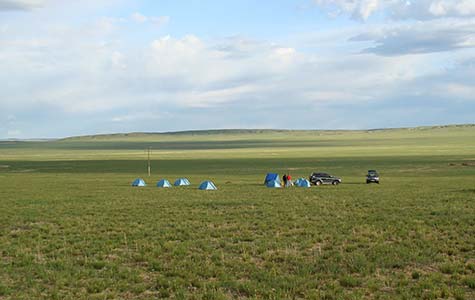
Mongolia has an abundance of fossil deposits that date to the early Cretaceous (approximately 100 to 130 million years ago), when flowering plants first appeared in the fossil record and then rapidly diversified. The fossil record is the best source of evidence to document the origin and early evolution of a group of plants such as the angiosperms. Although much paleontology work has been done in Mongolia searching for dinosaurs, very little field work and research on fossil plants has been undertaken there. This project seeks to document fossil plants from several Early Cretaceous age localities in Mongolia and Inner Mongolia that have exceptional preservation of fossil plants. The project team includes paleobotanists from the Garden, Nanjing Institute of Geology and Paleontology (China), and Niigata University (Japan). A grant from the National Science Foundation is funding this research. Our research has revealed an abundant and diverse assemblage of fossil seed plants belonging to the pine family and redwood family, relatives of ginkgo and cycads, and several very interesting fossil species thar belong to extinct groups of seed plants of uncertain affinities. Our research is currently focused on these extinct lineages to investigate their evolutionary significance within seed plants. (Herendeen, Herrera, Crane, Shi, and collaborators)

